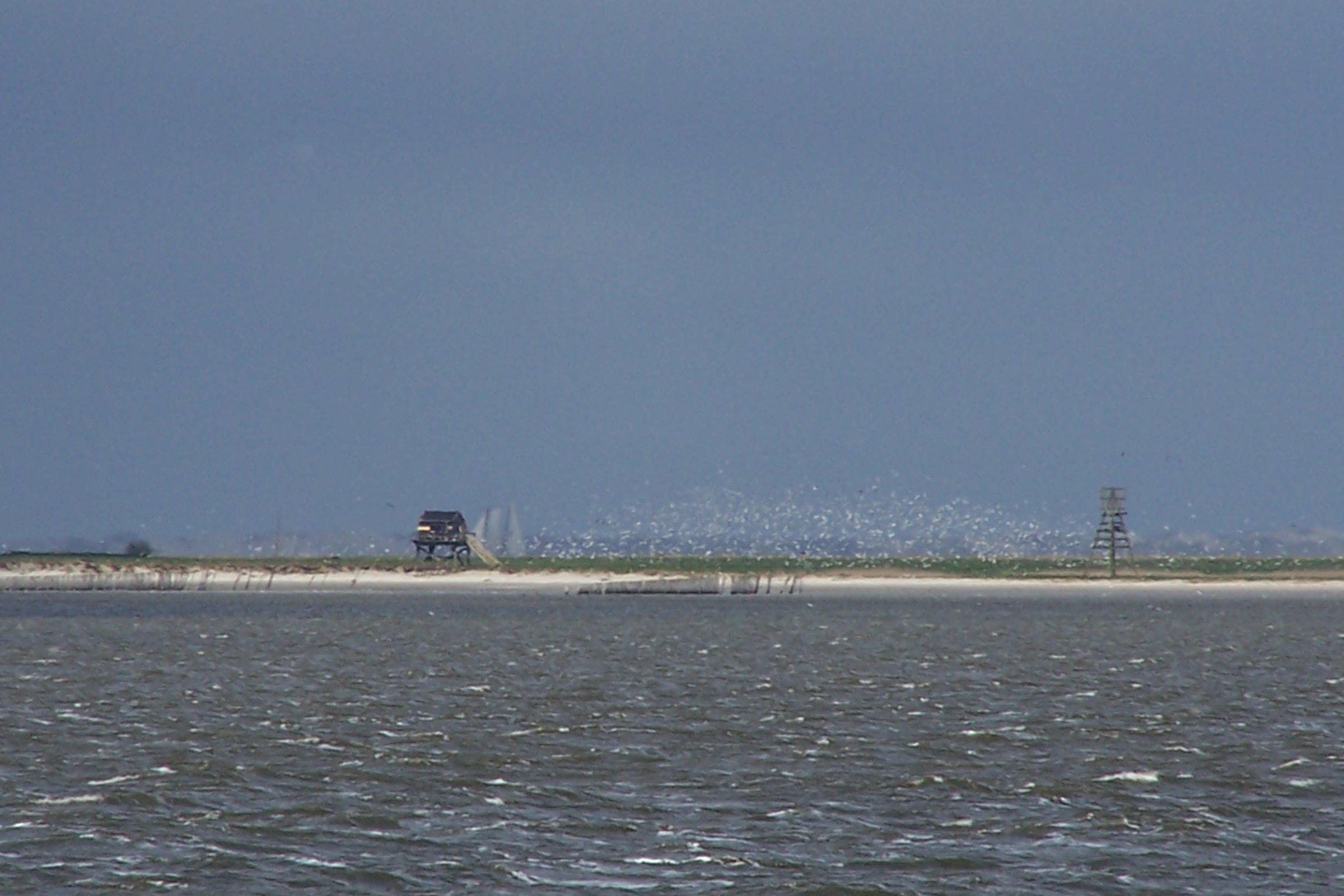Griend on:
[Wikipedia]
[Google]
[Amazon]

 Griend (; West Frisian: ''Gryn'') is a small uninhabited Dutch island in the
Griend (; West Frisian: ''Gryn'') is a small uninhabited Dutch island in the
Griend
Vereniging Natuurmonumenten. a union devoted to the protection of nature, which also tried to prevent the gathering of eggs by guarding the bird colonies on the island. After the Afsluitdijk was completed in 1933, the rate of erosion increased even more. However, the island has survived to the present day, though it is smaller than before, and its current location is to the southeast of what its location was in the Middle Ages.

Wadden Sea
The Wadden Sea ( nl, Waddenzee ; german: Wattenmeer; nds, Wattensee or ; da, Vadehavet; fy, Waadsee, longname=yes; frr, di Heef) is an intertidal zone in the southeastern part of the North Sea. It lies between the coast of northwestern conti ...
, lying around 12 kilometres south of Terschelling
Terschelling (; fry, Skylge; Terschelling dialect: ''Schylge'') is a municipality and an island in the northern Netherlands, one of the West Frisian Islands. It is situated between the islands of Vlieland and Ameland.
Wadden Islanders are k ...
. It is one of the West Frisian Islands
The West Frisian Islands (; fry, Waadeilannen) are a chain of islands in the North Sea off the Dutch coast, along the edge of the Wadden Sea. They continue further east as the German East Frisian Islands and are part of the Frisian Islands.
Fr ...
, and belongs to the municipality of Terschelling
Terschelling (; fry, Skylge; Terschelling dialect: ''Schylge'') is a municipality and an island in the northern Netherlands, one of the West Frisian Islands. It is situated between the islands of Vlieland and Ameland.
Wadden Islanders are k ...
. The island currently has an area of around 0.1 km2.
History
In the Middle Ages, the island was inhabited, and on it a walled settlement and a monastery could be found. As a result of continuous erosion of the coast, Griend became smaller over time. In 1287, the settlement was almost completely destroyed as a consequence ofSt. Lucia's flood
North Holland, 1st-10th century
St. Lucia's flood (Sint-Luciavloed) was a storm tide that affected the Netherlands and Northern Germany on 13/14 December 1287 ( OS), St. Lucia Day and the day after, killing approximately 50,000 to 80,000 peo ...
. The city was thereafter abandoned and from that time until the eighteenth century, Griend was inhabited by a few farmers, who built their houses on artificial hills. Around 1800, Griend still had an area of 0.25 km2, but the island was moving to the southeast at a speed of 7 metres a year. By that time, all of its inhabitants had abandoned the island, and from then on it was used by inhabitants of Terschelling as a grazing area for sheep, and for the making of hay. The eggs of gulls and terns were also gathered there for consumption.
In 1916, the grazing rights on the island were bought by the Vereniging Natuurmonumenten,Vereniging Natuurmonumenten. a union devoted to the protection of nature, which also tried to prevent the gathering of eggs by guarding the bird colonies on the island. After the Afsluitdijk was completed in 1933, the rate of erosion increased even more. However, the island has survived to the present day, though it is smaller than before, and its current location is to the southeast of what its location was in the Middle Ages.
Griend now
Nowadays, the island is uninhabited, with the exception of a cabin used in summer by birdwatchers and biologists. Griend is not accessible to the general public. Because Griend is unprotected bydyke
Dyke (UK) or dike (US) may refer to:
General uses
* Dyke (slang), a slang word meaning "lesbian"
* Dike (geology), a subvertical sheet-like intrusion of magma or sediment
* Dike (mythology), ''Dikē'', the Greek goddess of moral justice
* Dikes, ...
s, the island is slowly moving eastward. To protect the island and prevent it from vanishing altogether, some measures have been taken: along its southern edge, a few dams have been built, and, around 1990, the island was strengthened by building a low sand dyke along its north side. Since then, the process of erosion has changed into a process of gradual growth.
Fauna
The largest colony of Sandwich terns in Western Europe can be found on Griend: every year, around 10,000 pairs breed on the island. Among others, the common tern,Arctic tern
The Arctic tern (''Sterna paradisaea'') is a tern in the family Laridae. This bird has a circumpolar breeding distribution covering the Arctic and sub-Arctic regions of Europe (as far south as Brittany), Asia, and North America (as far south a ...
, common eider, common shelduck
The common shelduck (''Tadorna tadorna'') is a waterfowl species of the shelduck genus, ''Tadorna''. It is widespread and common in the Euro-Siberian region of the Palearctic, mainly breeding in temperate and wintering in subtropical regions; i ...
, Eurasian oystercatcher, common redshank, and occasionally the short-eared owl also breed on the island. During the building of the sand dike, the island was colonized by the wood mouse.
Griend is currently managed by the Vereniging Natuurmonumenten.
References
External links
* {{Authority control West Frisian Islands Islands of Friesland Uninhabited islands of the Netherlands Nature reserves in the Netherlands Ramsar sites in the Netherlands